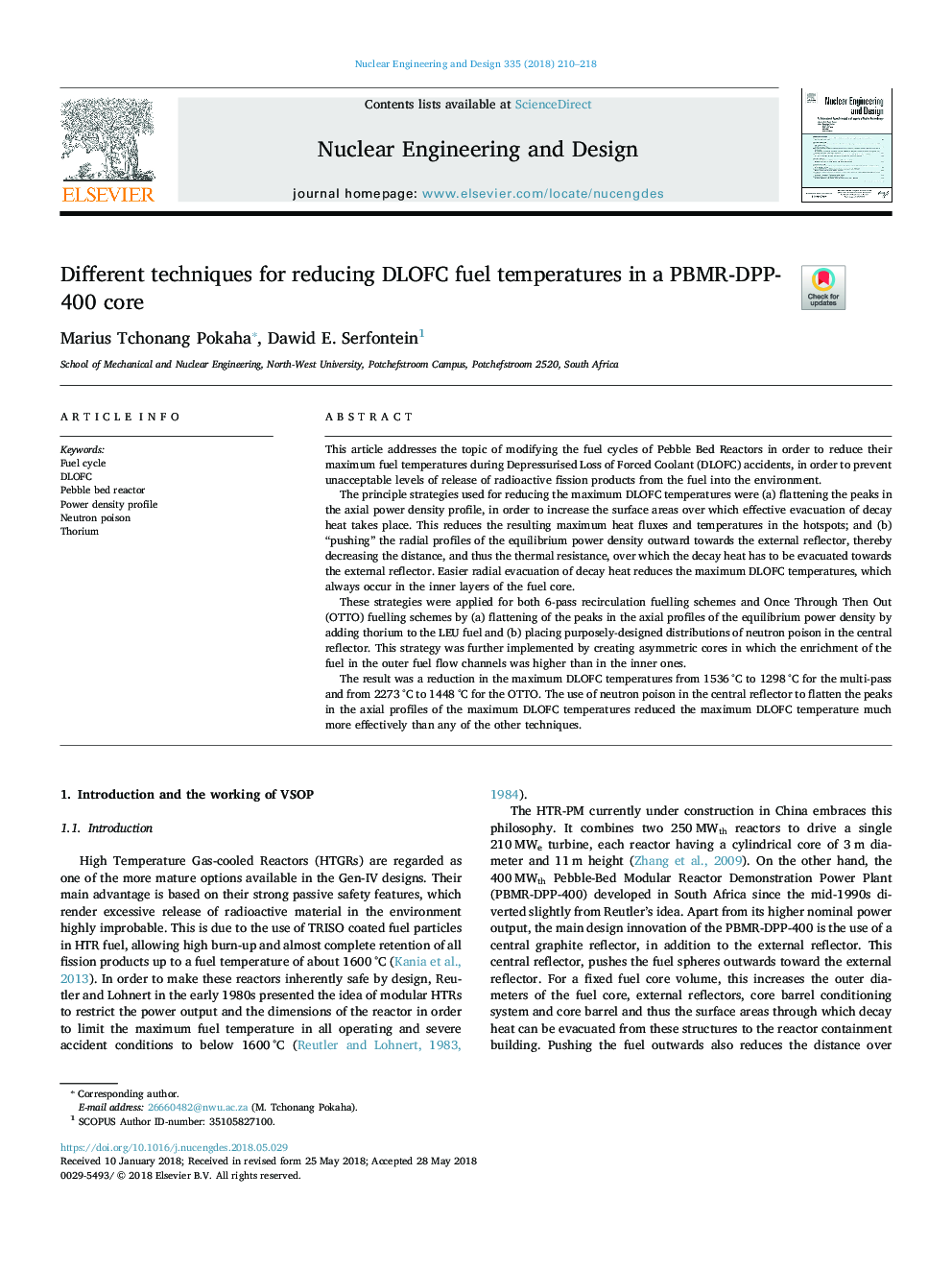| Article ID | Journal | Published Year | Pages | File Type |
|---|---|---|---|---|
| 6758725 | Nuclear Engineering and Design | 2018 | 9 Pages |
Abstract
The result was a reduction in the maximum DLOFC temperatures from 1536â¯Â°C to 1298â¯Â°C for the multi-pass and from 2273â¯Â°C to 1448â¯Â°C for the OTTO. The use of neutron poison in the central reflector to flatten the peaks in the axial profiles of the maximum DLOFC temperatures reduced the maximum DLOFC temperature much more effectively than any of the other techniques.
Keywords
Related Topics
Physical Sciences and Engineering
Energy
Energy Engineering and Power Technology
Authors
Marius Tchonang Pokaha, Dawid E. Serfontein,
